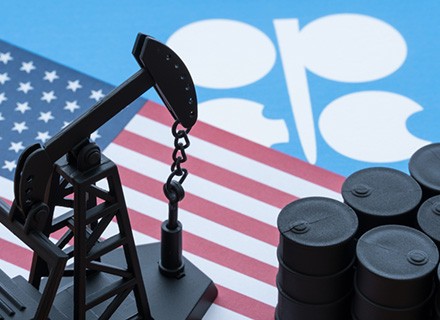Oil prices witnessed negative volatility in February 2023 amid an industry report pointing to ample supplies in the United States, along with the anticipation of further Federal rate hikes sparking concerns over weaker fuel demand and the economic outlook.
United States crude stocks rose by 10.5 million barrels, more than the original analysts’ forecast, according to market sources citing American Petroleum Institute (API) figures.
“Simply put, the U.S. is swimming in oil,” said Stephen Brennock of oil broker PVM to Reuters.
Brent crude futures slid USD 1.13, or 1.3%, to USD 84.45 a barrel by 0910 GMT, while West Texas Intermediate (WTI) crude dropped USD 1.31, or 1.7% to USD 77.75.
US inflation data and remarks from central bank officials have spurred worries among investors on whether the interest rates are going to be higher for a longer period, and this factor is too weighing on the market.
While Federal Reserve officials said that the central bank will need to keep on raising interest rates to beat inflation, they also suggested that price pressures driven by a hot domestic jobs market may push borrowing costs higher than they once thought.
Another contributory factor to the downward pressure on crude oil was the announcement by the Joe Biden government about selling 26 million barrels of oil from the nation’s strategic reserve, which is already at its lowest level in roughly four decades.
Also, the Organization of the Petroleum Exporting Countries (OPEC) came up with a report, where the group made its first upward revision to global oil demand growth in months and trimmed the non-OPEC supply outlook, pointing to a tighter market in 2023.
The International Energy Agency, in its latest report, also boosted its 2023 demand forecast.
Meanwhile, Russian Deputy Prime Minister Alexander Novak announced that the country plans to cut its oil production by 500,000 barrels per day in March 2023.
While reiterating the country will not comply with any Western price cap, the official also said that the aim of the cut is to improve the market situation.
In February 2023, Saudi Arabia announced the move of raising the official selling price of its flagship crude going to Asia by March. The hike, which was the first in six months, was reportedly due to expectations of a rebound in Chinese demand.
Saudi oil giant Aramco lifted the price of its flagship Arab Light grade to Asia for March 2023 loadings by USD 0.20 per barrel to a premium of USD 2.00 a barrel over the Dubai/Oman average, despite the fact that oil prices have fallen recently. That’s the first increase in the official selling prices (OSPs) for Asia since September 2022, reflecting the Saudi expectations of a rise in the Asia demand from the 2023 second quarter onwards.

